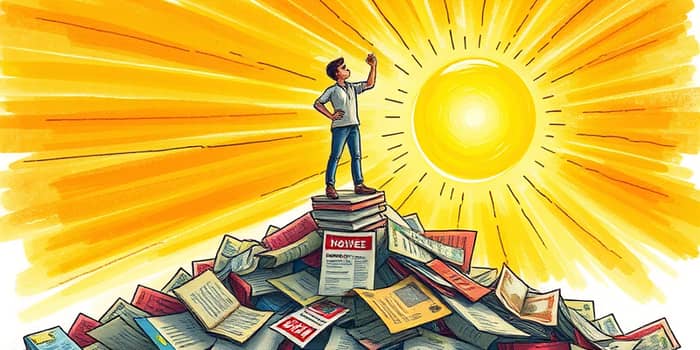
Bankruptcy often carries a stigma, but there are moments when it represents the most prudent path to financial health. By understanding the right timing, benefits, and risks, you can decide if it’s your best option.
Bankruptcy is a court-supervised process that helps individuals and businesses eliminate or restructure debt. The two most common personal filings are Chapter 7 (liquidation) and Chapter 13 (repayment plan). In 2025, there were 529,080 total bankruptcy filings—a 13.1% rise from 2024—underscoring growing financial pressures nationwide.
Chapter 7 cases make up about 60% of filings, with 96% of those deemed “no asset” proceedings. Chapter 7 remains on credit reports for ten years, while Chapter 13 stays for seven.
Many filers grapple with medical, credit card, or tax debts so overwhelming that other remedies, such as debt settlement or credit counseling, have been exhausted. Bankruptcy offers a legal fresh start by discharging qualifying obligations under court protection.
Bankruptcy isn’t solely a last resort—it can be a calculated move when circumstances indicate it’s the most effective solution.
Filing for bankruptcy comes with tangible and intangible pros and cons. It’s essential to weigh these carefully before taking action.
Advantages include:
However, important risks must be considered:
Many delay filing until their situation worsens, but expert research shows earlier intervention often yields better outcomes. Entrepreneurs sometimes embrace bankruptcy due to its strategic use of Chapter 13 as a safety net, encouraging them to innovate without paralyzing fear of failure.
Common errors to avoid include trusting unverified debt relief companies and misunderstanding state exemption laws. Since regulations vary by jurisdiction, consulting a qualified attorney or credit counselor can clarify which assets you retain.
To determine if bankruptcy is right for you, consider these warning signs:
After filing, the journey continues. Most filers see credit scores begin to recover within one to two years, especially if they maintain on-time payments on any remaining obligations. Specialized lenders provide credit-building tools for post-bankruptcy consumers, emphasizing that a clean slate can lead to stronger habits.
Real-life accounts show people moving from constant anxiety to securing new car loans, refinancing homes, and even starting businesses within five years of discharge. The psychological boost of laying burdens to rest can foster confidence and allow for positive risk-taking.
Ultimately, bankruptcy is not a sign of failure but a tool for financial rebirth when used wisely. By recognizing the triggers, understanding the trade-offs, and planning for recovery, you can harness the process to rebuild stronger than before.
When debt becomes an inescapable cycle, facing the decision early—and gathering reliable advice—can transform bankruptcy from a fearful last resort into a strategic stepping stone toward a healthier financial future.
References













